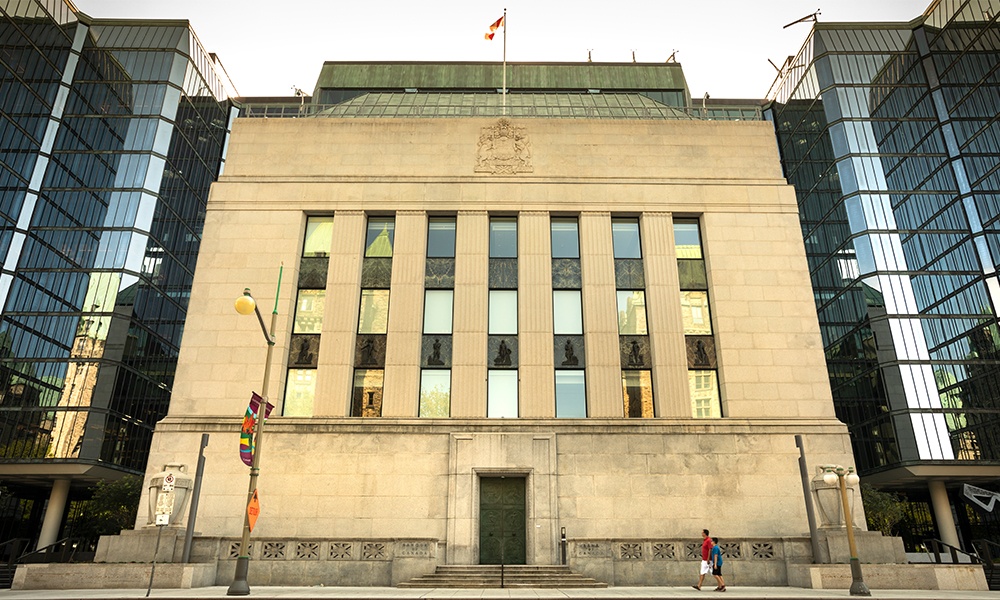Central bank's foray outside conventional monetary policy creates three-part challenge, say policy experts

Along with the federal government’s bold and aggressive response to keep the pandemic-hit Canadian economy afloat, the Bank of Canada has gone beyond its traditional monetary policy tools, embarking on large-scale asset purchases as it keeps interest rates at record lows. In doing so, the central bank has created a three-pronged challenge for itself, according to experts at the C.D. Howe Institute.
In a new report, Steve Ambler and Jeremy M. Kronick highlighted the need for the BoC to simultaneously deal with three challenges: providing economic stimulus, hitting inflation targets and managing its massively expanded balance sheet.
Those challenges are coming in as the bank slashed its key monetary policy rate to 25 basis points while expanding its balance sheet at an unprecedented pace.
“With these interventions come challenges and risks, both in terms of hitting the Bank’s 2 percent inflation target and navigating a balance sheet with assets, namely provincial and private-sector securities, outside its usual holdings of federal government debt,” Ambler and Kronick said.
To keep providing stimulus, the two proposed that the bank could purchase longer-term government bonds and private-sector securities directly from the private sector, which they said would infuse money into the economy and promote spending. The bank should also keep communicating how its balance sheet will develop and explaining the reasons behind any continued intervention.
Seemingly taking a page from the Federal Reserve’s average-inflation-targeting playbook, the authors also encouraged the BoC to accept a temporary overshoot of its 2 per cent inflation target. “A concrete way to achieve this would be to move to target the average rate of inflation over a horizon of two or three years,” Ambler and Kronick said.
And while artificially depressing interest rates may help debt-saddled governments across Canada, the two said it could lead to an erosion of the Bank of Canada’s credibility and independence. It also muffles any market signals on the riskiness of government debt, which the two said distorts credit markets where federal government bond yields are used as a benchmark.
One way to reduce the credit and political risk from holding provincial and private-sector debt to a greater-than-typical degree, Ambler and Kronick said, is for the central bank to exchange those assets for Government of Canada debt. That would put the decision to buy up the assets in the hands of the BoC, and the federal government would be in charge of managing the associated credit and political risk.
“It is imperative that governments clearly lay out a plan for bringing back fiscal anchors that were set aside during the pandemic, with a clear plan for achieving the optimal level for these anchors,” the two authors said. “It is also imperative for the Bank of Canada to re-commit, alongside the federal government, to hitting the 2 percent target as part of the 2021 inflation-control renewal.”



